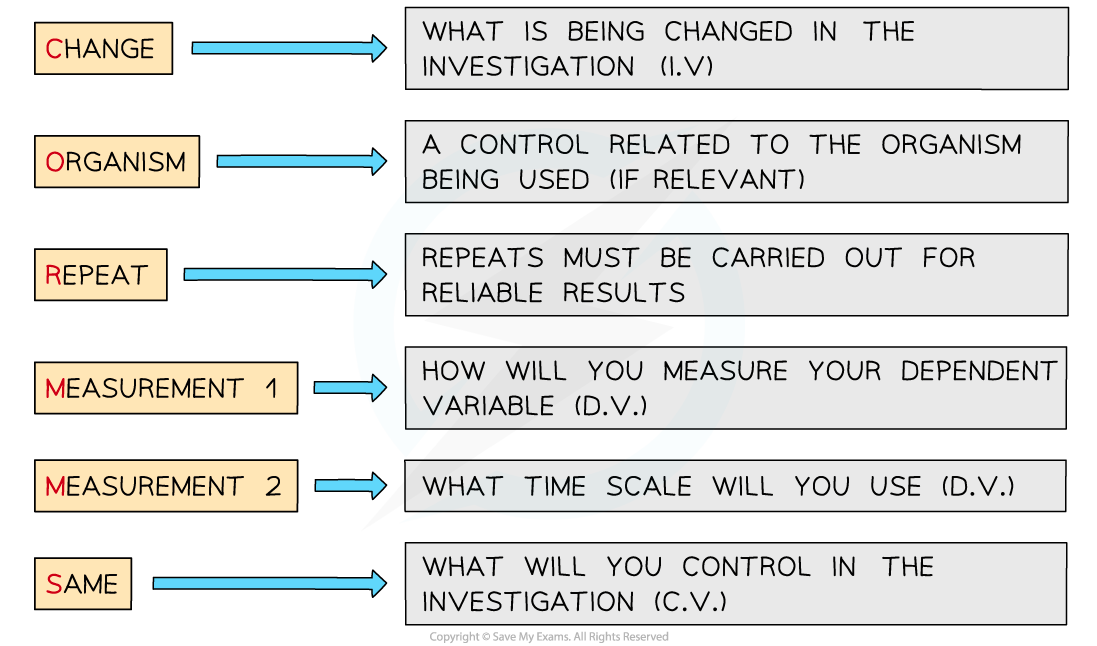Practical: Factors that Influence Diffusion
- Diffusion is the movement of molecules from a region of higher concentration to a region of lower concentration
- The rate of diffusion is influenced by several factors:
- Temperature
- Surface area
- Concentration gradient
- Diffusion distance
- You can investigate how temperature affects diffusion using beetroot
- Beetroot cells contain a dark purple-red pigment
- Heating above 45℃ can damage the cell membrane meaning that the pigment can leak out
- The speed at which this pigment leaks out of the cell tells us about the rate of diffusion
Investigating the effect of temperature on diffusion
Apparatus
- Beetroot
- Knife
- Cork borer (optional)
- Cutting board
- Ruler
- Test tubes
- Water baths
- Stopwatch
Method
- Using a knife, cut 2 equally-sized cubes of beetroot
- The pieces must have the same dimensions so that they all have equal surface areas and volumes, as these factors could affect the rate at which the pigment leaks out
- A cork borer can also be used, as long as the cores are cut to the same length
- Rinse the beetroot pieces
- To remove any pigment released during cutting
- Put 5 cm3 of water into 2 test tubes labelled A and B
- Keep test tube A at room temperature and transfer test tube B to a hot water bath at 90℃
- Leave the test tubes for 2 minutes, then add a piece of beetroot into each test tube
- After 10 minutes, observe the colour of the liquid in both test tubes
Results and Analysis
- You should notice that at the higher temperature, more of the pigment has leaked out of the beetroot
- This is because:
- The cell membrane of the beetroot cells has become damaged so more pigment can leak out
- At higher temperatures, particles have more kinetic energy, this results in the faster movement of particles compared to when they have less energy


Investigating the effect of temperature on diffusion in beetroot
Limitations
- The beetroot pieces may not be identical in size and shape, meaning one test tube could contain slightly more beetroot tissue than the other
- Solution: cut the beetroot as accurately as possible using a knife and ruler, and repeat each investigation several times to find a mean
- Some parts of beetroot tissue could have more pigment in their cells than others
- Solution: conduct several repeats, using different parts of the beetroot and find a mean
- Our results would be more reliable if we tested a range of temperatures rather than just testing 2
- Solution: Set up 5 test tubes in water baths at different temperatures (e.g. 10℃, 20℃, 30℃, 40℃, 50℃)
- Observing the colour is a subjective measure which means it is difficult to really compare the differences in diffusion between the test tubes
- Solution: use a colorimeter to measure how much light is absorbed as it passes through each of the five samples of coloured liquid
Applying CORMS to practical work
- When working with practical investigations, remember to consider your CORMS evaluation

CORMS evaluation
- In this investigation, your evaluation should look something like this:
- C - We are changing the temperature of the environment
- O - The beetroot cubes will all be taken from the same beetroot or beetroot of the same age
- R - We will repeat the investigation several times to ensure our results are reliable
- M1 - We will observe the colour change of the liquid
- M2 - ...after 10 minutes
- S - We will control the volume of water used, the dimensions of the beetroot cubes and each cube must be blotted before it is weighed each time







